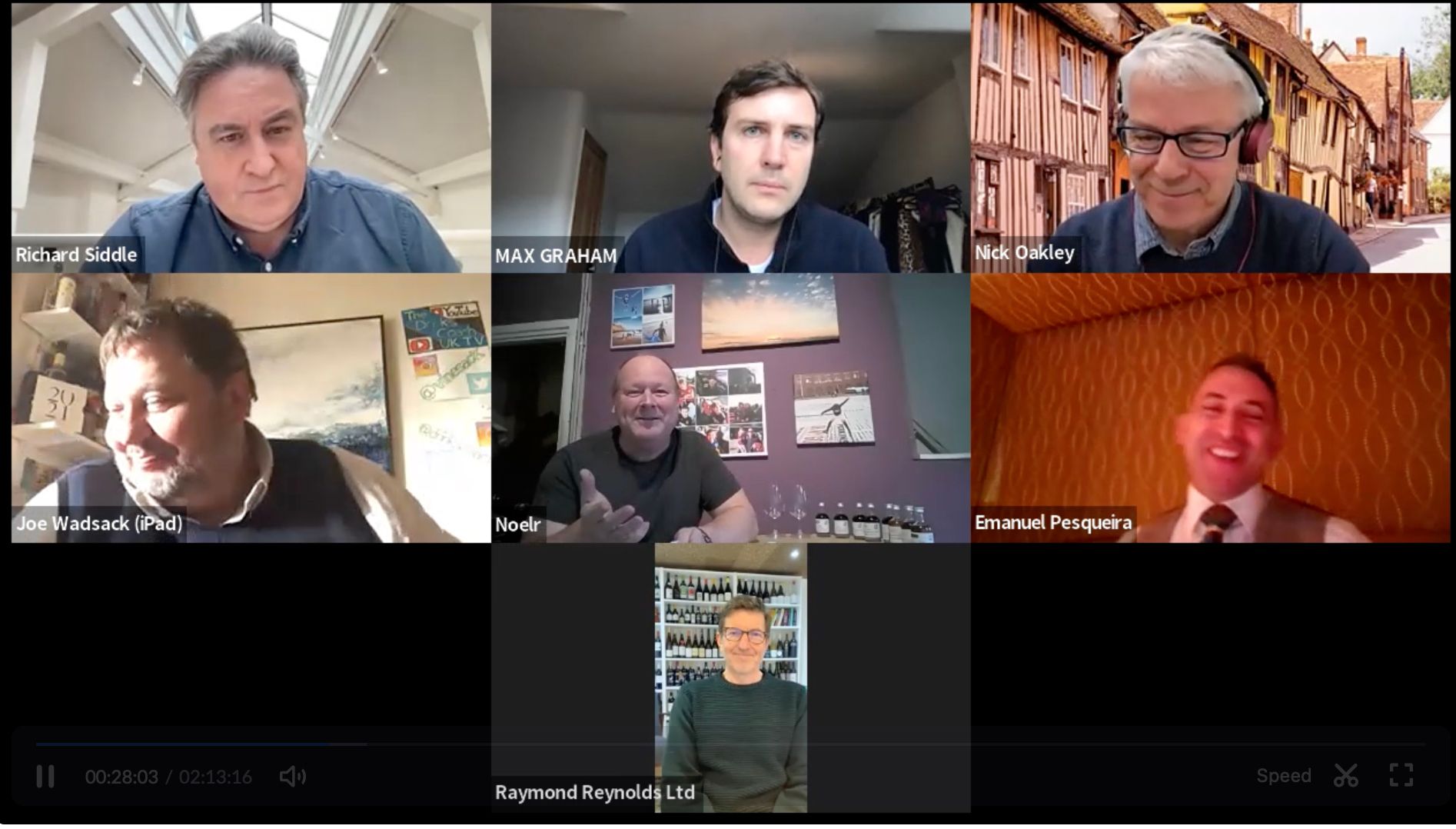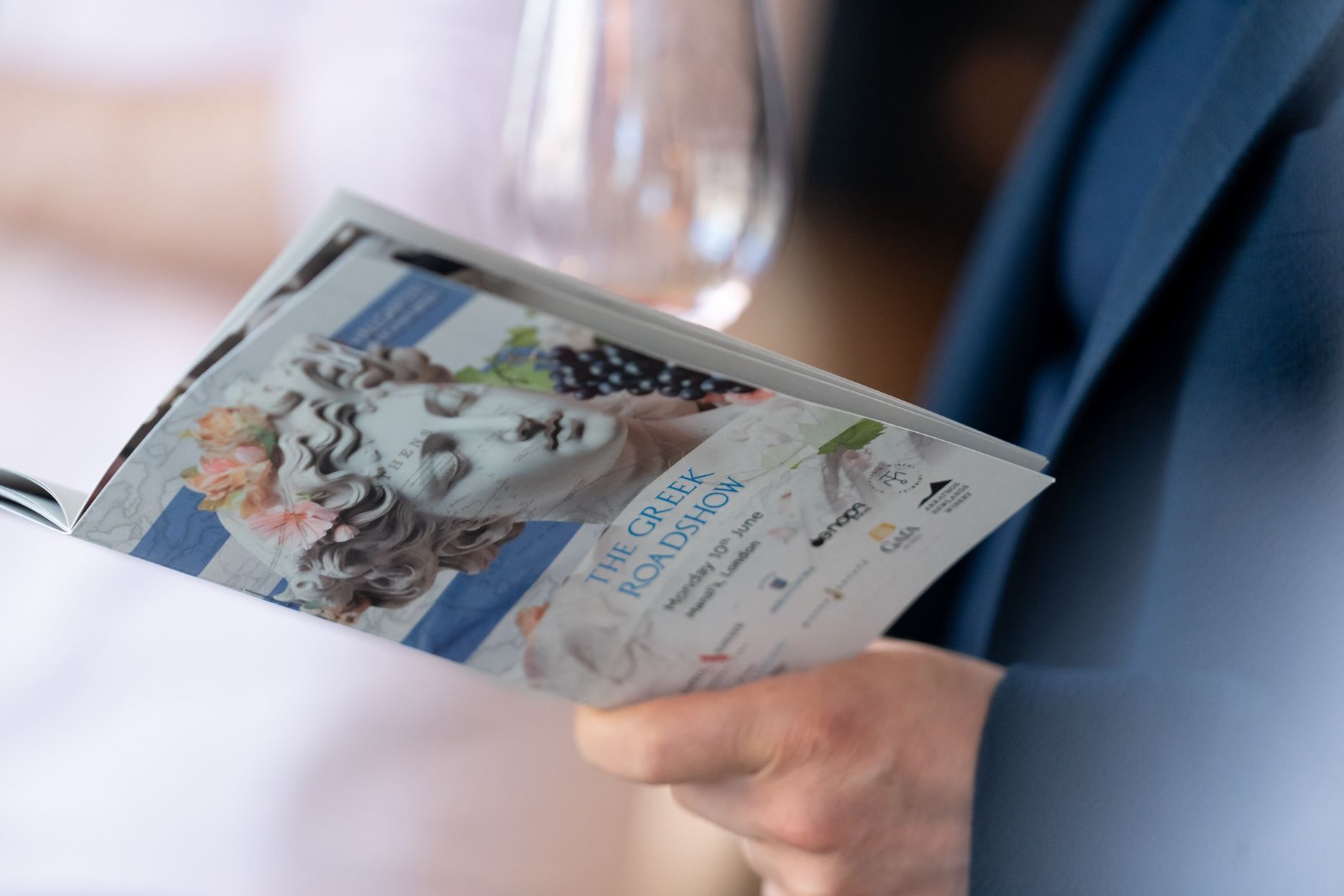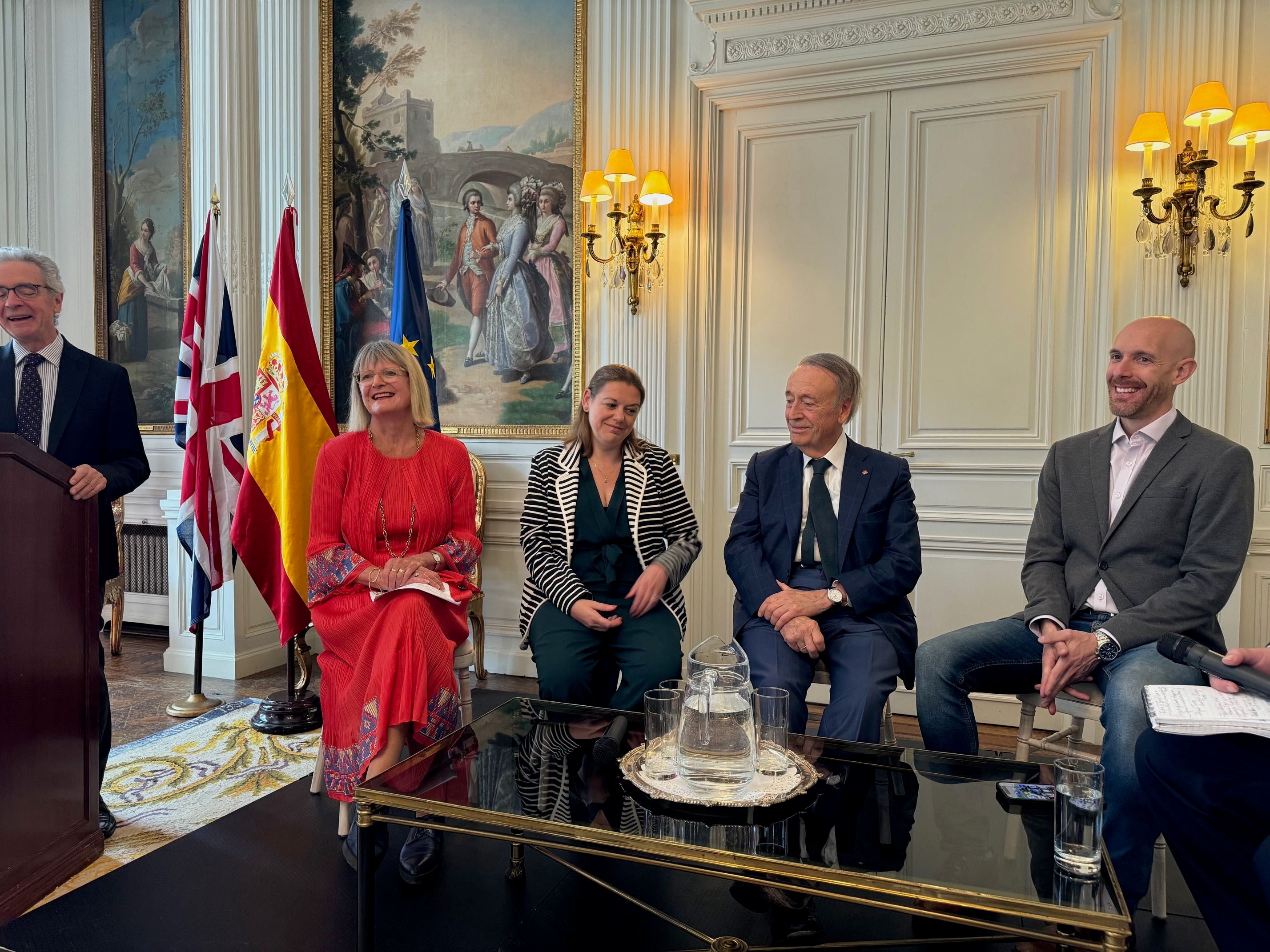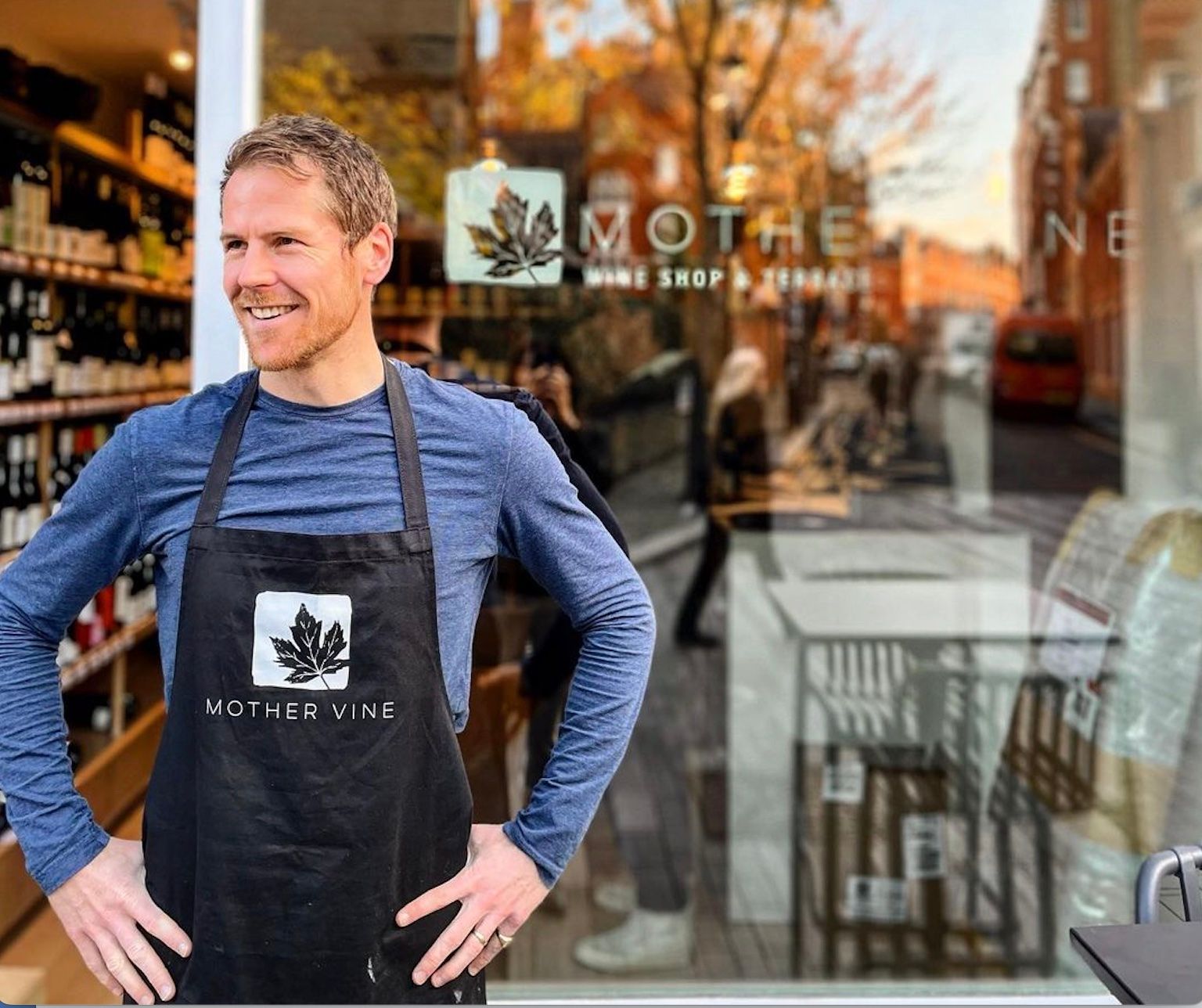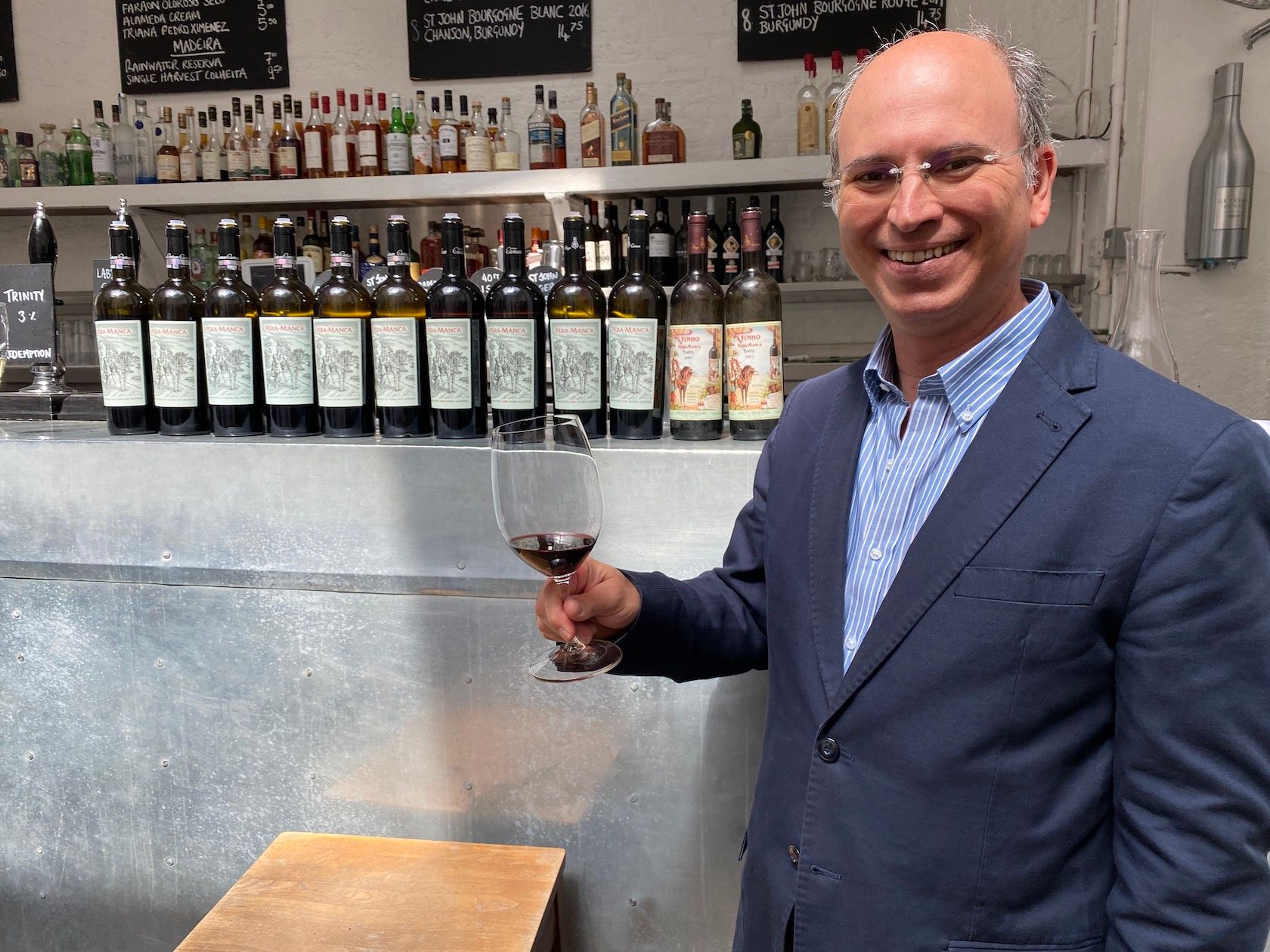Setúbal might still be making its way in the UK but it is the region’s fastest growing export market and its producers are keen to open up as many doors as they can. Which is what The Buyer tasting with Setúbal Peninsula Wines was all about. This is part one of a two part report – look out for the second article, focusing on the potential of Moscatel in the UK that is being published later in the week.
It’s perhaps Portugal’s greatest calling card that it remains such a treasure trove of wines, regions and peninsulas for wine buyers still to explore and discover new areas and styles of wine to work with and import. But it just goes to show how diverse the country’s wine offer is that there could possibly be anywhere that could be realistically called ‘emerging’ considering how long Portugal has been making wine.
Yet, for many, the Setúbal peninsula remains largely undiscovered. Even though it is only a short taxi ride away from the centre of Lisbon. For those that do know the region, then it is often its fortified wines that have caught the eye, but its warm maritime climate, heavily influenced by the Atlantic Ocean, means it is also home for a wide range of fine red and white gastronomic wines too.
It has certainly made its name within Portugal itself where it can claim to be the second biggest market for certified wines, driven by huge demand in on-trade. This year alone it saw a 200% increase in volume and 234% rise in value in the first quarter. The region is now keen to build on that success and explore more export opportunities. Particularly in the UK.
Which is where our UK panel of buyers comes in, hand picked as being strong representatives of how well the UK market is doing with Portugal as a whole in the premium on and off-trades.
Our thanks go to the panel that included:
- Raymond Reynolds, founder of Raymond Reynolds
- Nick Oakley, founder of Oakley Wine Agencies
- Noel Reid, founder of Rediscover Wines
- Emanuel Pesqueira, head sommelier, Gordon Ramsay Restaurants
- Max Graham, founder, Bar Douro
- Joe Wadsack, wine broadcaster, representing Setúbal Peninsula Wines
(You can watch the full recording of the debate here)
Before diving into Setúbal in particular, the panel was able to share what it is about Portugal that has been so important for their own businesses and what do they look for in its wines.
After all it is a country that both Raymond Reynolds and Nick Oakley have built so much of their specialist import businesses around.
Nick Oakley has been importing and selling Portuguese wines since he started his business in 1990 and says for the first 20 years he only sold wines from Portugal. Dedication indeed.
It now represents around 14 Portuguese wineries on an ex cellar “outsourced export” UK officebasis, with on average two producers in each region. He is currently working with one Setúbal winery, Herdade de Gambia.
He says he first got interested in Portugal by the fact his wife’s parents had retired to the Algarve and they were able to take plenty of visits and discover the country’s wines first hand. “It wasn’t a plan, I fell into it. I don’t have a drop of Portuguese blood in me, but I fell in love with its wines and am still in love with them.”
Long term commitment
It has, though, taken quite a while for the rest of the UK to wake up to the charms of Portugal and much of the last 32 years has “been like pushing mercury up hill”.But there has been a real turnaround over the last five years or so, particularly amongst the major supermarkets which make up around 80% of his Portuguese business which has “been booming”. “It’s been getting easier and easier, and better and better,” he adds.
Raymond Reynolds has also been fighting Portugal’s cause for a similar amount of time, but also has family ties to the country as well. He agrees with Oakley that it has “taken a while” to really get going but once it achieved a “critical mass” it has not looked back. He says a lot of credit has to go to the producers and Portuguese wine authorities for reinventing its wines in the export market which has resulted in what he now sees as a “natural enthusiasm” for its wines.
“We are 90% Portugal dealing with around 28 wineries,” he adds, and is currently working with one producer from Setúbal, Sivipa and the Cardoso family.
Noel Reid is quick to praise the efforts and hard work that both Oakley and Reynolds have put in over the years, which has opened the way for importers like himself.

The Setúbal region is the second biggest market for certified wines in Portugal
He says he set up Rediscover Wines around a year ago in order to find new expressions and ideas from different regions around the world and although he currently does not have a Portuguese winery amongst the eight he has already signed up, he is looking to do so. Hence why he was keen to take part in the debate and find out more about these red wines from Setúbal that he admits he is “completely unaware of”.
In terms of what he is looking for Reid could not be clearer: “Those that know me, it’s all about quality and value. It does not go much further than that.”
Authenticity counts
For Joe Wadsack it is the “individuality and authenticity” you can find right across Portugal, whatever region you look at that he finds so appealing. “They always stand out in any blind tastings or judging you are doing. They have real identity and are really Portuguese.”
Which is why Portugal always does so well in major wine competitions, stresses Reid.
The fact Portuguese winemakers have been willing to listen, take advice and even take part in judging major wine competitions has also helped them see their wines in context with the rest of the world, says Wadsack. “The wines have developed and improved because of their participation and they should be congratulated for that. Their wines are far more drinkable as a result.”
(Click here for Bar Douro’s Max Graham and Joe Wadsack on the experimentation taking place to make cutting edge wines)
Max Graham admits he has a bit of a head start when it comes to Portuguese wines as he is part of the Graham Port family, that now runs the Churchill’s brand, and grew up in the Douro Valley.
He says his inspiration for starting Bar Douro came on the back of the success of running an eight month pop up bar for Churchills in Soho in 2012. Whilst he was pleased with the reaction to the bar, he could not believe that Portugal was so poorly represented amongst all the bars and restaurants in central London, compared to what was happening for Spain.
Graham says that even though he is from Portugal running the bar has been a “voyage of discovery” for himself, and finding different styles of wine and fortified, particularly from the south of the country.
“We really focus on the diversity that Portugal offers and really try and showcase the pioneers,” he says. “People who are navigating where Portuguese wines are going. We really champion the cutting edge. What I love about the Portuguese wine scene at the moment is its dynamism. It’s a melting pot of talent.”
New winemakers are picking up the mantle thrown down by those “pioneers” and are now taking Portugal off in different directions, which is very much seen in the new energy around an area such as Setúbal. Producers that really care about the identity of Portugal, including “regional and sub-regional identity” and where they are going.
The role of tourism has also been hugely important for Portugal as a whole, stresses Graham. “Tourism to Portugal has boomed in the last five years,” he says.
Quality and bottom line
For a sommelier Portugal has always offered such an abundance of quality, says Emanuel Pesqueira. What is particularly interesting to see now is after Covid how many more smaller, independent producers are looking to work in UK restaurants and not just leave the market to the bigger, established big names.
“They are starting to deliver something exceptional,” he says, which fits neatly with his customers who are so much more knowledgeable post Covid and willing to try new wines and use apps and web links to find out more about them.
He certainly agrees with the panel that Portugal is all about discovery, but with also great value, and ideal for him at Gordon Ramsay considering he is always looking to find new wines for his 100 plus by the glass menu. Which is why getting to know a region like Setúbal better is such an important and useful exercise, he adds.
“There are so many great wines undiscovered in Portugal,” he says and he is constantly blown away by what he can find there. Plus, the fact they also make “an incredible GP and contribution to your bottom line – so they tick all the boxes”.
Reynolds agrees: “It all comes down to the wines themselves and the fact the wines are getting better and better.”
Introducing Setúbal

Joe Wadsack was able to give his personal impressions on Setúbal having visited the region recently and spent a lot of time with producers tasting right across the region’s wines.
He says there is no doubt that the Setúbal has to date “been loved” far more by the Portuguese than those outside the country, but considering its proximity to Lisbon and the fact it is a region that is so synonymous with everyday drinking in the country, it is understandable why exports have not been so high on the agenda.
But for those who do know the area they can look forward to spending time on miles of unspoilt beaches and eating some of the best sardines and canned fish anywhere in the world, says Wadsack. Which is reason in itself to explore the area. It also happens to be the birthplace of famous football manager Jose Mourinho.
The region can effectively, like Portugal itself, be split into two main areas in the north and the south.
The vineyards in the northern mountain area is where clay and limestone soil predominates and there is still a strong maritime influence but the climate is milder, with altitudes of between 100m to 500m. This is where the main top quality white wines are made and fortified, particularly the famous Moscatel de Setúbal.
Then there is what is known as the “flat area” to the south which is mainly alluvial sandy soils, and you get a much wider range of temperatures, with hot days, cold nights and is where up to 80% of the vineyards are planted with the local Castelão red grape variety.
A change in landscape that Wadsack says is like going from the lush green hills of Beaujolais to driving into the deserts of Australia in the south.
The vineyards close to the sea bring a lovely salinity and “coolness” to the wines, says Wadsack.
Setúbal as a whole has 7,000 hectares of certified vines of which 3,190ha are made up of Castelão vines – that also accounts for 45.1% of all red grapes – and 646ha are Moscatel de Setúbal (9.2% of grapes). Other key varieties are for whites Fernão Pires (8.8%) and Arinto (2%) and for reds Syrah (6.8%) and Alicante Bouschet (4.4%).
Blending is key
Varieties, says Wadsack, that are well suited for a hot climate and working in large blends that bring acidity and freshness. He believes Shiraz in Setúbal has “astonishing potential” and here it is all about black fruits and a “nice, stylish backbone” and be a great by the glass wine over winter.Although there are only around 50 hectares of Moscatel Roxo in the region (0.8% of production) anyone who owns a hectare is held in high esteem such is the quality of the grapes they produce, he adds.
The overall region is split into three areas: the Setúbal Peninsula G.I; the D.O. Pamela, where the red grape variety Castelão is so prevalent and you have to have 66% of it in any wine that uses it in Pamela; and D.O. Setúbal which is for sweet wine grape production. Of which G.I Setúbal does have EU approval, says Wadsack, to grow up to 249 different varieties if it wanted.
Buyers’ Setúbal perceptions
(Click below for Raymond Reynolds on how Setúbal and Portugal are now making wines that people can really enjoy)
Raymond Reynolds believes there has not been anything wrong with Setúbal’s wines over the years, it’s just other regions have moved much quicker to promote themselves and Setúbal has not been able to present a coherent identity to the wider trade.
It has also mostly been dominated by less than a handful of very big producers who have taken the lion’s share of attention, says Wadsack, but there has over the last decade been more independent players making excellent wine and, crucially, looking to export them too.
That’s the kind of winemaker with whom Reynolds wants to source his wines. Smaller players operating in some of the lesser established zones in the region that they can really build long term relationships with, he says. “They can really bring spice and interest from the smaller grower perspective.”
But there is certainly no problem in introducing customers to these styles of wine. “These are wines that people are enjoying. Whether it’s pure Syrah or a blend of Syrah, or Touriga, or Castelão they are just coming to them. They have got expression and are good across the price range and tourism is bringing things to people’s lips. This is generating this enthusiasm and the winemakers are responding to that. They are finding their own expressions. This is the fun of it now.”
That’s what excites Max Graham about the smaller producers in Setúbal, the fact they are so open to “experimenting and pushing boundaries” like putting Moscatel de Setúbal in amphorae.
He urges buyers to seek out both reds and whites from Setúbal as you can really appreciate the maritime influence in both, particularly from native varieties. “Old vine, white wines from Setúbal are just wow. They are fantastic. The reds and whites are good and for a restaurant like ours it’s a lot of boxes ticked.”
Blended power
Max Graham says the role of blended wine in Portugal is on the one hand its “super power” considering the number of varieties it has, but it can also be hard to then explain those wines to customers. But he was interested to see the quality and diversity of blended wines from Setúbal.
“Talking more about Portugal as master blenders that’s the super power that we can really celebrate.”
The panel had the chance to taste a couple of wines that showed how blended wines work in Setúbal.

Vineyard workers at Adega Fernão Pó
First came the ASF, 2019, Red, from Adega Fernão Pó, which is a blend ofCastelão (75%), Touriga Nacional (15%), Tannat (10%) available to buy at €7.08 ex works. Wadsack feels this is a great example of how much “character and local identity” there are in Setúbal wines. “It is astonishing.”
Reid says he was “excited” by what he could pick up on the nose and again liked the “character” that comes through in the wine. “It’s like strawberry cheesecake,” adds Wadsack.
“There is enough Castelão to make an impression,” says Reynolds, with its “herbally, stalky, bramble fruit character. “It ticks the boxes.”
It also shows how well Castelão can perform in a blend, particularly when it is handled well in the vineyard and in the cellar, he adds. Reynolds says the wine is certainly (…?) It is also ideal for ageing and does particularly well with old vines and reminds him of some of the characteristics you get with old vine Shiraz in Australia.
Pesqueira says you can really identify the Touriga Nacional and how it gives a solid backbone to the wine.
“They also have bottle age and are ready to drink.”

The highly respected and influential José Maria da Fonseca’s manor house has become a tourist attraction
Oakley says he was interesting to see the value that exists below £10 on shelf from Setúbal and was particularly taken by the Quinta de Camarate, 2017 from José Maria da Fonseca in the tasting (see below) with a RRP of £9.“This is an interesting wine and is in my territory at around £9 retail. This is a smart wine, is five years old and got good balance with nice acidity.”
Pesqueira would like to see a bit more freshness in the wine and Reynolds felt it “falls away on the finish”.
It is also one of the biggest selling wines in Portugal, adds Wadsack.
Exploring Castelão

Jaime Quendera is the winemaker at Adega de Pegões,
The panel also had the chance to taste single variety wines made just from Castelão. First up was Fontanário de Pegões Vinhas Velhas Castelão, 2016, Red from Adega de Pegões, one of the biggest co-operatives in the region, which is imported by Hallgarten Novum Wines for ex-works €10.
This is an example of a full on, fully ripe, expressive Castelão with the hand brake off, and comes from vines that are 70 years old. “I think this is an astonishing bottle of wine for the money,” says Wadsack. “It’s very ripe and very southern Portuguese. It has the silk of premium Barossa wines.”
Reid says he likes the “crunchiness” of the wine and “fine, attractive tannins”.
The old vines influence in Setúbal also have an important role to play with vineyards dating back 120 years and more that really express themselves in the wine, says Reynolds. The old vines can also be seen in the tannic structure of the wines, adds Wadsack. Particularly in the Quinta do Piloto Reserva, 2018, Red from Quinta do Piloto imported by Raymond Reynolds with a trade price of around £15-17.

Raymond Reynolds has been working with Quinta Do Piloto for some time
Reynolds was able to talk through the wine himself and says it is made in a very traditional way in “auto fermenters, concrete and then aged in new and old barrels” and is a great example of what 100% Castelão can do. Graham says it has a lovely “vegetal” character to it that you can “chew on,” whilst Pesqueira thinks it has a very Mediterranean feel to it. “It’s unbelievable.”
“There are some wild characters in there,” adds Reynolds, reflecting on its funky nature. Wadsack “likes the shape of the wine and its fine tannins”.
The only question is the price, adds Pesqueira. “It’s the Rolls Royce of Castelão.”
Pesqueira singles out the Adega Camolas Grande Escolha Vinhas Velhas, 2017 from Adega Camolas (ex works €11) made from Castelão Old Vines from Adega Camolas as his “hero” wine from the region and one he has been buying for many years. It comes from a single block vineyard planted in 1931, of which only 4,000 bottles are made every year.
“I don’t know why no-one imports this. It is absolutely incredible,” says Pesqueira. “Now I get transported to Setúbal. That’s a proper wine. I buy it from my own collection. Absolutely stunning. It also expresses everything about the grape variety, its freshness, the herbs and its balance. You don’t even feel the alcohol. There is also a magic touch of French oak that changes the whole perspective.”
Wadsack agrees: “This shows what old vines can do. It’s 15% abv but it wears it like a Paul Smith suit. It’s a really lovely drink and has all the characteristics of old vine Castelão. It’s got the right phenolics, flavour and wonderful acidity and the tannins just melt in the mouth.”
Role of appellations?
(Click here for Nick Oakley, Max Graham & Joe Wadsack: why promoting region first is key for Setúbal & Portugal)
Oakley believes the UK consumer looks for two things when choosing a wine: the grape variety; and the appellation. “Which is why I am pleased we are talking about Setúbal as a region, and as an appellation. As a policy Oakley Wine Agencies tries to promote the region. So we champion the Douro, or the Dao. The biggest name on the bottle has to have something familiar to jump out to the consumer. As in Tesco’s Finest Douro. That’s what you are trying to sell. The simplicity of the message.”
“That’s why we called our restaurant Bar Douro,” says Graham. “I completely agree with you. Our wine list is region is first and when we talk to our customers about regions otherwise, I can get very complicated.”
Pesqueira is less sure about only pushing the region as it could be confusing the consumer to really understand what they are going to be tasting, be it from Dao, the Douro or Setúbal as the wines from every Portuguese region are so varied and diverse.
Reid says it is clear from going through the wines just how much diversity there is in Setúbal where in one wine can you have “meatiness and mushroom and maritime” flavours coming through and then switch to “a more commercial style of wine” where “neither is right or wrong” but it makes it hard to determine what Setúbal is about.
“I love the idea of using the region on the bottle, but the issue is right there when you have two wines that are completely different animals and knowing what you are going to get,” he says.
The final word in part one of our report goes to Nick Oakley: “We are on a journey. When I first started, Portugal was the adventure and any of their wines were completely off piste. To some degree people are now prepared to try anything from Portugal because they now have confidence in the country.”
- Part Two of our report focusing on Moscatel will be published later this week.
- You can find more about Setúbal Península Wines at its website: https://vinhosdapeninsuladesetubal.org/en/or contacting by email: geral@cvr-psetubal.com
- You can also reach the region’s PR agency in the UK hello@thewineagency.pt
- You can also follow on Facebook: vinhosdapeninsuladesetubal and Instagram: @vinhosdapeninsuladesetubal.
